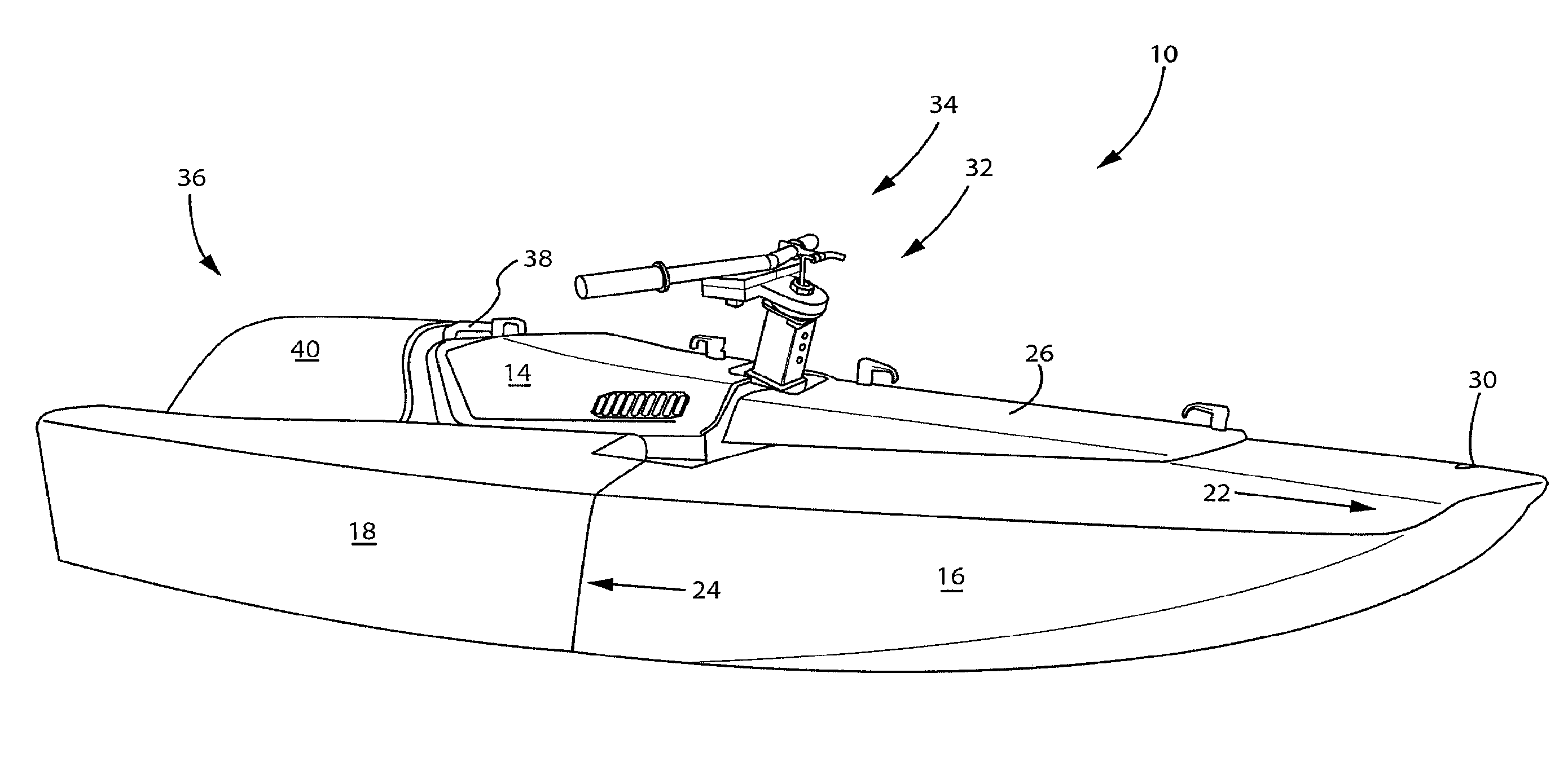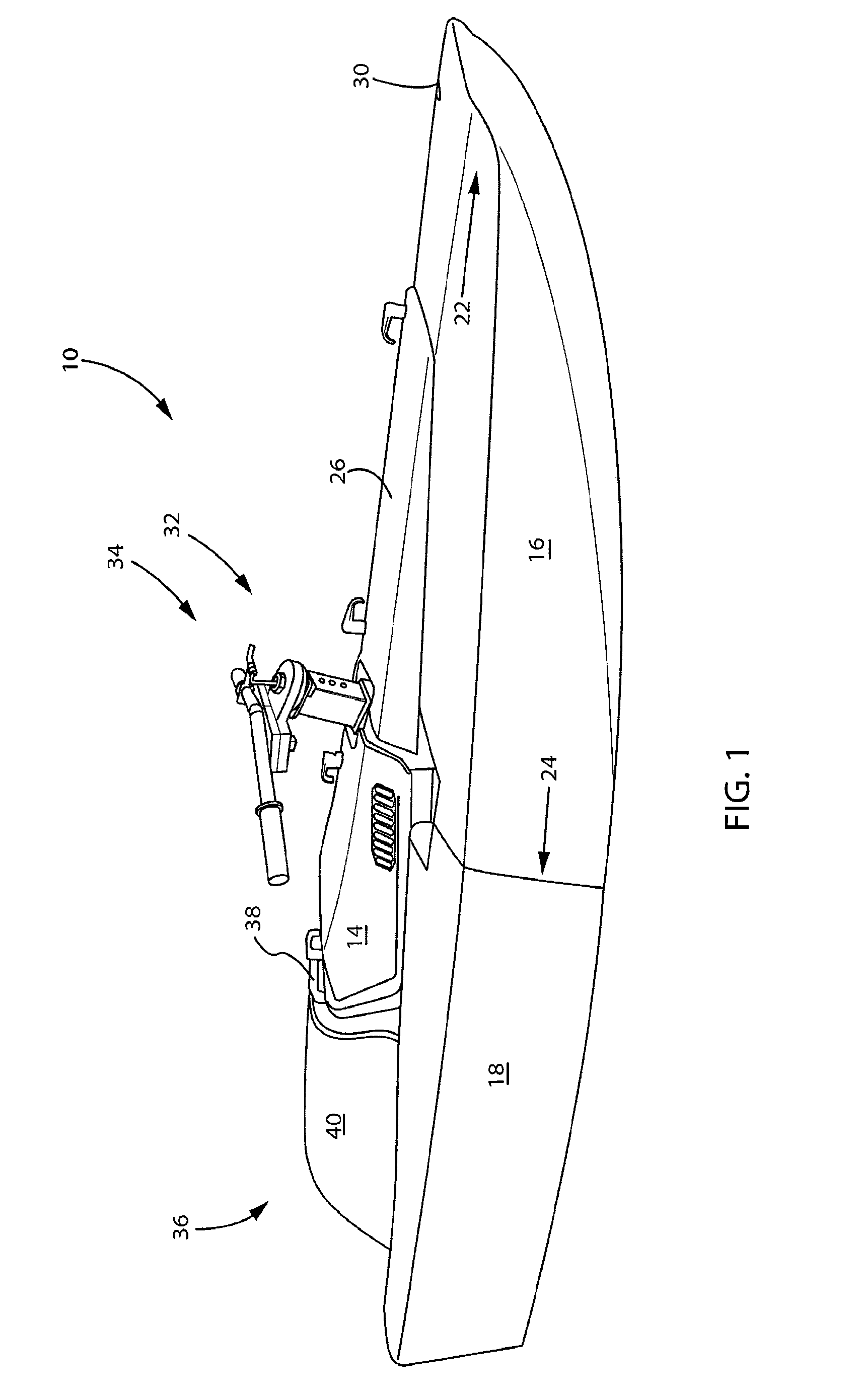Modular personal watercraft
a technology of personal watercraft and watercraft body, which is applied in the field of watercrafts, can solve the problems of limited storage space, preventing many people from enjoying the sport of personal watercraft operation, and reducing the practical value of personal watercraft, so as to achieve the effect of disassembly and disassembly, assembly and disassembly, and limited effor
- Summary
- Abstract
- Description
- Claims
- Application Information
AI Technical Summary
Benefits of technology
Problems solved by technology
Method used
Image
Examples
Embodiment Construction
[0048]The present invention and the various features and advantageous details thereof are explained more fully with reference to the non-limiting embodiments described in detail in the following description.
1. System Overview
[0049]The above-mentioned requirements of transportability and disassembly without special tools are impossible in the case of conventional personal watercraft. However, it is rendered possible to satisfy these requirements to various extents by employing a separable power pod and one or more sponsons or floats thereby allowing an operator to transport and load or unload discrete portions of a watercraft into or from a vehicle, thus eliminating the need for a trailer for transporting the watercraft. Although described hereinafter as being directed to personal watercraft systems, or a watercraft configured to support an operator and / or possibly one or two riders in a generally aligned or orientation, it is appreciated that features of the present invention, such ...
PUM
| Property | Measurement | Unit |
|---|---|---|
| power | aaaaa | aaaaa |
| power pod | aaaaa | aaaaa |
| volume | aaaaa | aaaaa |
Abstract
Description
Claims
Application Information
 Login to View More
Login to View More - R&D
- Intellectual Property
- Life Sciences
- Materials
- Tech Scout
- Unparalleled Data Quality
- Higher Quality Content
- 60% Fewer Hallucinations
Browse by: Latest US Patents, China's latest patents, Technical Efficacy Thesaurus, Application Domain, Technology Topic, Popular Technical Reports.
© 2025 PatSnap. All rights reserved.Legal|Privacy policy|Modern Slavery Act Transparency Statement|Sitemap|About US| Contact US: help@patsnap.com



